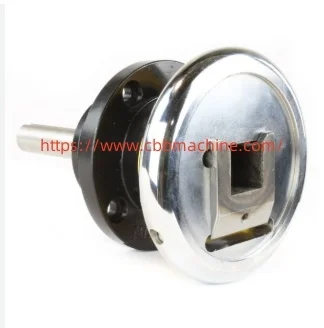In modern web-handling systems, the Safety Chuck plays a crucial role in connecting rotating shafts securely and efficiently during production processes.
This mechanical component is essential in operations such as winding, unwinding, printing, slitting, and laminating, where rotating shafts must be engaged or disengaged swiftly. The mechanism simplifies shaft loading and unloading, minimizing downtime and reducing the risk of equipment mishandling or misalignment. Rather than requiring tools or complex mechanisms, the user-friendly design allows operators to open and close it quickly, contributing to smoother workflows and increased productivity on the factory floor.
One of the notable advantages of this component is its ability to maintain precision alignment between machine shafts and torque-transmitting parts like brakes or motors. This precision ensures consistent tension control, essential for avoiding material damage or uneven winding during high-speed operations. With proper integration, it helps maintain material integrity, which is critical for applications in paper, film, foil, and textiles.
In terms of construction, units are typically made of high-strength steel or cast iron, chosen for durability and load-bearing capacity. Many designs incorporate replaceable inserts to extend service life and support easy maintenance. This modular approach minimizes operational disruptions and lowers the total cost of equipment ownership.
Mounting options are also versatile. Flange-mounted units are ideal for vertical installations, while foot-mounted styles suit horizontal layouts. This flexibility allows engineers to adapt the solution to a wide range of configurations depending on space constraints and equipment type.
When combined with expanding air shafts or other core gripping devices, this component forms a secure coupling system that transmits torque without slippage. This is particularly valuable in applications where consistent core engagement and rotational stability are critical. Its simple locking mechanism ensures the shaft remains stable during sudden stops or high-speed rotations.
Safety and reliability are central to its value. In environments with high-speed movement or rotating machinery, preventing unintended shaft disengagement is essential. This not only protects the equipment but also safeguards workers by reducing the risk of accidents. A secure lock mechanism offers peace of mind in demanding industrial settings.
Regular inspections and lubrication are recommended to ensure long-term performance. Users should periodically check for signs of wear, especially on the square slots and locking parts, to avoid mechanical issues during operation. By maintaining this equipment correctly, factories can reduce downtime and maintain consistent production throughput.
In summary, this component offers industrial operations a simple yet effective method of managing shaft connections under varying mechanical loads. It supports faster production cycles, better material control, and enhanced safety measures—qualities that are increasingly vital in competitive manufacturing environments.
To learn more about this technology and its integration, visit https://www.cbbmachine.com/news/industry-news/safety-chucks-function-types-maintenance-and-more.html







